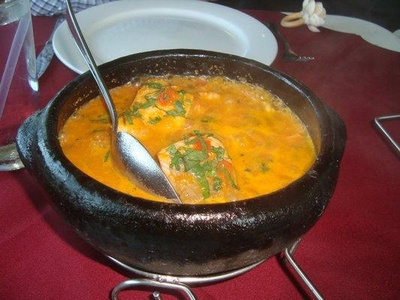One really cannot speak of travel without including the subject of food. Travel and food go hand in hand. Name the destination, and images of touristic landmarks and exotic cuisines come to mind. When one hears “Brazil” it’s normal for people to think of the Brazilian barbecue or churrasco. The all-you-can-eat-meat-buffet has come to be synonymous with the country of cattle and gauchos. (Yes, there are gauchos in the southern Brazilian states).
But to limit an understanding of Brazilian food to barbecued meats would not do the country culinary justice. Whether Italian, Japanese, Middle Eastern, German, Polish or Korean, cultures represented by immigration have duplicated their flavors and traditions within the Brazilian context. In the city of São Paulo especially, you don’t have to go far to find food from some distant corner of the world deliciously prepared.
In fairness though, it’s important to point out that there is a uniquely Brazilian cuisine. It is tempered by the spices of the northeast, the jungles of the Amazon region, the teeming varieties of fish taken from the ocean that borders Brazil’s eastern coast. Brazil is a country that geographically is larger than the continental United States. And just as you would find chowder and baked beans in Boston, gumbo and pecan pie from the South, dairy dishes from the Great Lakes region, and BBQ from Texas, you can expect a wide range of regional favorites in Brazil.
Most of my experiences with Brazilian food have been completely accidental. I have been blessed to have many families and friends receive me in their homes. And in those cases, my meal is subject to the whim of the person in the kitchen.
One of the most unusual dishes I’ve ever eaten is pato no tucupí or “duck in tucupí,” made by cooks principally in and around the city of Belém.
It takes most of the night and morning prior to prepare the dish for lunch. It is not, I am told, just for any Tom, Dick or Mary. It is reserved especially for “visitantes ilustres.” I don’t know. I never considered myself an illustrious visitor. It’s a nice thought though.
Let’s talk about the dish. The meat portion is “pato” or duck. Chicken may be substituted, but if you rate duck, then you are ilustre indeed!
The interesting part is the tucupí. Tucupí is an indigenous word used to describe the juice extracted from the root of the manioc plant. Oh, and did I mention that manioc root juice is toxic?! It contains cyanide glucoside which turns to cyanide when combined with the right enzymes.
I believe that the juice was applied to arrow tips by tribal peoples as a paralytic. The manioc root juice or tucupí, is added to the cooking pot for a little culinary adventure. Together with the duck, garlic, a leafy green veggie called jambu, the mixture is boiled down for awhile, thus reducing the toxic impact of the manioc juice.
Now the exciting part about dining on pato no tucupí is in the narcotic effect that it has when you are consuming the savory stew, served usually over rice. Tucupí acts a lot like Novocain. As you eat your meal, you can feel your lips and the insides of your mouth begin to go numb. It’s a really odd feeling as the condition intensifies.
There’s also the thought that runs through your head, “Man, I sure hope they cooked this right!”
Traveling south in the direction of the eastern coast of Brazil, you may be fortunate to come across the state of Espírito Santo. Many names in Brazil have religious significance, though I suppose that the same may be said about cities in the US. Lots of saints and angels here too. Espírito Santo means Holy Spirit in Portuguese.
In a state known for its seafood, the piece de resistance is a dish known as moqueca capixaba. Roughly translated as “fish stew,” it’s so much more!
Moqueca Capixaba is made with seafood, called “fruit of the sea” in Portuguese. Capixaba is a word that identifies the dish as being from Espirito Santo. The rich stew includes fish and shrimp. And for a little more, you can have them include crab and lobster. The seasonings come from a blending of onion, tomatoes, cilantro, garlic and olive oil.
What makes the dish unique is the use of annatto seed and lady’s finger peppers. That, combined with a special fish puree, really intensifies the flavor. The meal eaten leisurely while sitting in the open air looking out across Vitória Bay in the capital city of Espírito Santo cannot be matched.
One bit of good news is that as a resident of Ventura County, an hour north of Los Angeles, I can enjoy the moqueca capixaba experience at a local restaurant in Oxnard. Drop me a note. I’ll send you the details!
© 2010 John Katagi









